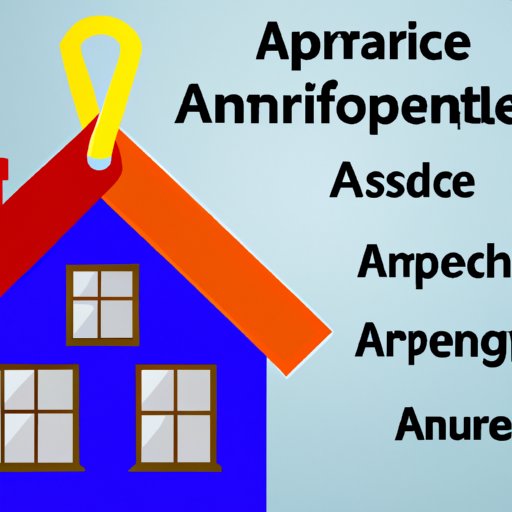Introduction
An adjustable rate mortgage (ARM) is a type of loan in which the interest rate is adjusted periodically based on changes in an underlying index. This index can be based on economic indicators such as the prime rate or the LIBOR (London Interbank Offered Rate). ARMs are popular because they offer borrowers the potential for lower payments than fixed-rate loans. However, there are also risks associated with ARMs, so it’s important to understand how they work before taking out a loan.
Exploring Adjustable Rate Mortgages: What They Are and How They Work
An adjustable rate mortgage, or ARM, is a loan that has an interest rate that can change over time. The interest rate is based on an underlying index, such as the prime rate or the LIBOR. Generally speaking, when the underlying index increases, the interest rate on the ARM will also increase. Conversely, when the underlying index decreases, the interest rate on the ARM will also decrease.
When taking out an adjustable rate mortgage, you will typically have a “teaser rate” for the first few years. This is a low, fixed interest rate that is designed to attract borrowers. After the teaser rate period is over, the interest rate will adjust according to changes in the underlying index. This means that your payments may go up or down depending on changes in the index.

Adjustable Rate Mortgage Basics: An Overview
When considering an adjustable rate mortgage, it’s important to understand the different types available. There are two main types of ARMs: hybrid ARMs and traditional ARMs. Hybrid ARMs have a fixed interest rate for a certain period of time, after which the interest rate adjusts according to the underlying index. Traditional ARMs have an adjustable interest rate from the start, meaning the interest rate can change at any time.
When choosing an ARM, it’s important to consider the length of the initial fixed rate period. Additionally, you should consider the index and margin used to determine the interest rate. A margin is a set amount that is added to the index to calculate the interest rate. Generally speaking, the longer the initial fixed rate period and the lower the margin, the better.
The process of applying for an adjustable rate mortgage is similar to that of a fixed-rate mortgage. You’ll need to provide financial information such as income, assets, and debts. You’ll also need to provide information about the property you’re buying or refinancing. Once approved, you’ll need to sign the loan documents and pay closing costs.

Benefits of an Adjustable Rate Mortgage
One of the primary benefits of an adjustable rate mortgage is the potential for savings. Since the interest rate is tied to an underlying index, it can adjust downward if the index decreases. This can result in significant savings over the life of the loan.
Additionally, adjustable rate mortgages typically have lower payments than fixed-rate mortgages. This is due to the lower initial interest rate, as well as the potential for the interest rate to decrease over time. This can make it easier for borrowers to qualify for a loan and can help them stay within their budget.

How the Adjustable Rate Mortgage Process Works
The process of obtaining an adjustable rate mortgage is similar to that of a fixed-rate mortgage. After finding a lender and providing the necessary financial information, you’ll need to sign the loan documents and pay closing costs. Then, you’ll receive your loan funds and begin making payments according to the terms of the loan.
It’s important to understand the terms of your adjustable rate mortgage. This includes the length of the initial fixed rate period, the index used to determine the interest rate, and the margin used to calculate the interest rate. Additionally, you should know when the interest rate can adjust and how often it can adjust.
Conclusion
Adjustable rate mortgages offer borrowers the potential for lower payments and savings over the life of the loan. However, there are risks associated with ARMs, so it’s important to understand how they work before taking out a loan. When choosing an ARM, it’s important to consider the length of the initial fixed rate period, the index used to determine the interest rate, and the margin used to calculate the interest rate. Additionally, you should understand the terms of the loan and when the interest rate can adjust.
Overall, adjustable rate mortgages can be a good option for borrowers who want the potential for lower payments and savings over the life of the loan. However, it’s important to understand the risks associated with ARMs and to make sure you’re comfortable with the terms of the loan before signing on the dotted line.
(Note: Is this article not meeting your expectations? Do you have knowledge or insights to share? Unlock new opportunities and expand your reach by joining our authors team. Click Registration to join us and share your expertise with our readers.)
